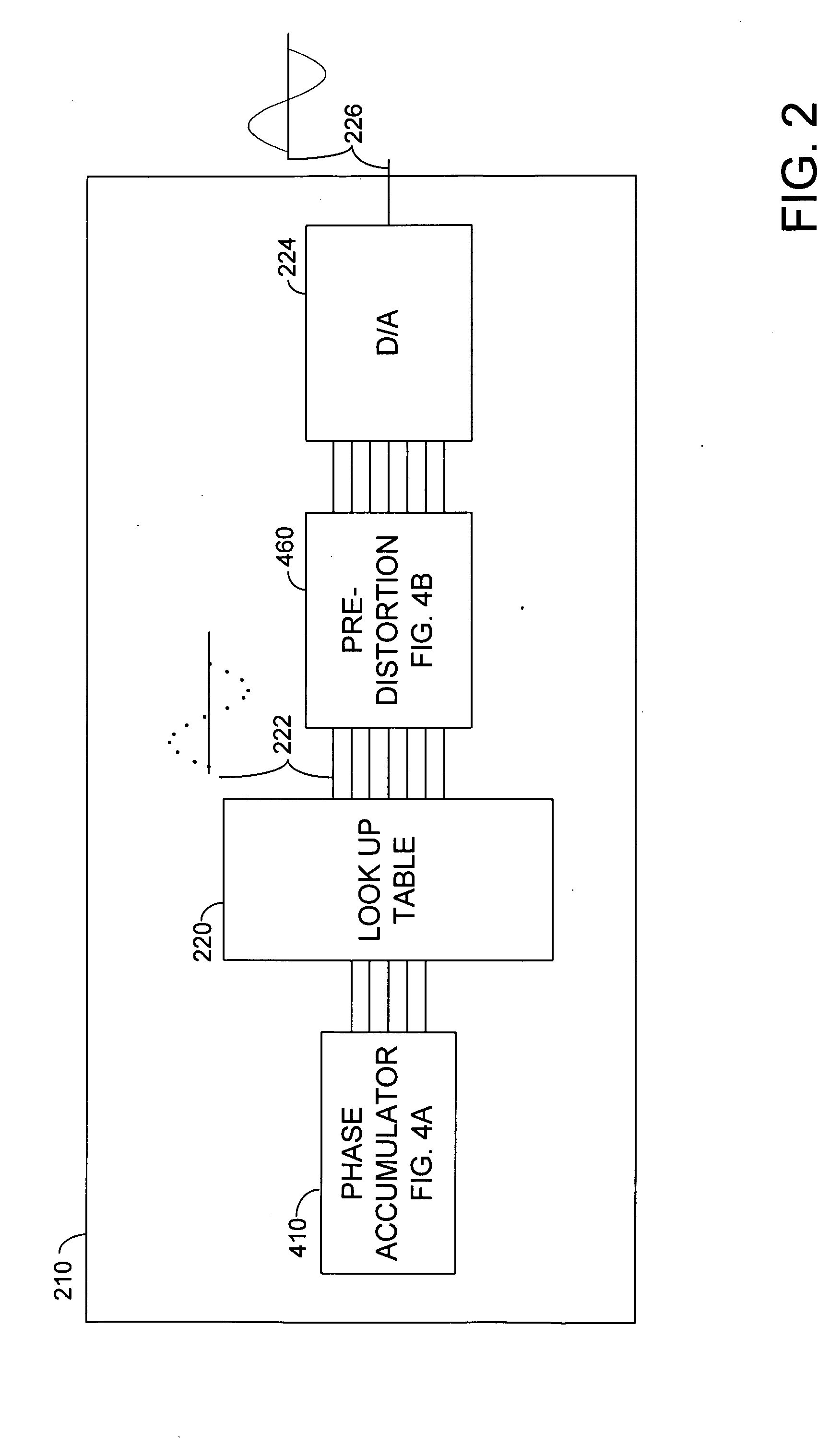Low cost, high purity sine wave generator
a sine wave generator, low cost technology, applied in the direction of instruments, computing, electric digital data processing, etc., can solve the problems of inability to determine whether the device operates as expected, defective devices that actually perform as expected, and inability to accurately test, etc., to achieve accurate circuitry, low cost, and high distortion
- Summary
- Abstract
- Description
- Claims
- Application Information
AI Technical Summary
Benefits of technology
Problems solved by technology
Method used
Image
Examples
Embodiment Construction
[0026]The inventors have appreciated that a semiconductor test system may be improved with an accurate, programmable sinusoidal signal generator that is readily implemented at low cost as part of a test system. According to an embodiment of the invention, a sinusoidal signal generator is implemented without look-up tables to store a representation of the sinusoidal signal. As a result, the sinusoidal signal generator may be readily implemented within a field programmable gate array or other semiconductor device that has limited memory. Reducing the need for large amounts of memory to store a look-up table as part of a sinusoidal signal generator may be particularly desirable as part of an automatic test system that includes multiple sinusoidal signal generators.
[0027]FIG. 1 illustrates an automatic test system that may employ one or more sinusoidal signal generators according to an embodiment of the invention. Test system 110 includes control circuitry 112. Control circuitry 112 may...
PUM
 Login to View More
Login to View More Abstract
Description
Claims
Application Information
 Login to View More
Login to View More - R&D
- Intellectual Property
- Life Sciences
- Materials
- Tech Scout
- Unparalleled Data Quality
- Higher Quality Content
- 60% Fewer Hallucinations
Browse by: Latest US Patents, China's latest patents, Technical Efficacy Thesaurus, Application Domain, Technology Topic, Popular Technical Reports.
© 2025 PatSnap. All rights reserved.Legal|Privacy policy|Modern Slavery Act Transparency Statement|Sitemap|About US| Contact US: help@patsnap.com



